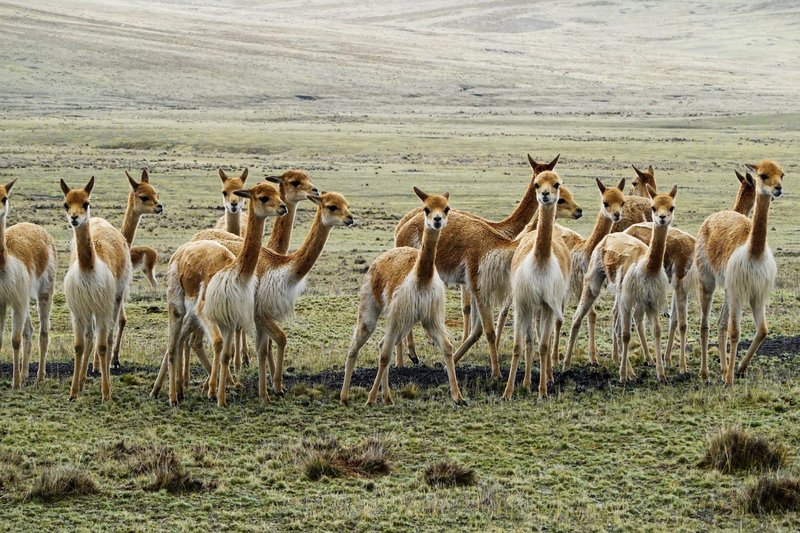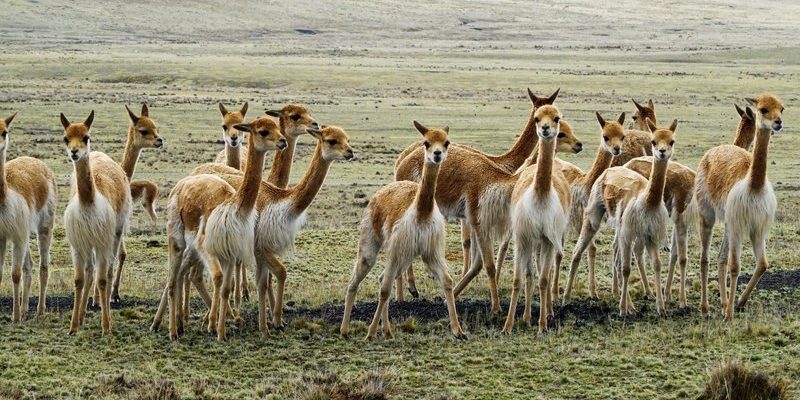
The Quechuan Hocicudo (Ctenomys tuconotus) is a small, burrowing rodent native to the Andes mountains. Often referred to as a “tuco-tuco,” this creature possesses a distinctly long snout and a robust body, which gives it a unique appearance among rodents. Imagine a furry little excavator, tirelessly digging into the earth to create intricate tunnel systems. These tunnels not only provide shelter but also serve as a hunting ground for food.
These rodents are named after the Quechua people, an indigenous group from the Andean region. The name “hocicudo” translates to “big snout,” which is quite fitting considering their elongated snouts. You might be wondering how these little creatures survive in such rugged terrains. Well, their adaptations are remarkable! They’ve developed strong, sharp claws to dig through tough soil, making them quite efficient in their natural habitat.
Interestingly, the Quechuan Hocicudo plays a vital role in its ecosystem. As they dig, they aerate the soil, helping plant roots grow. So, in a way, every time a hocicudo burrows, it’s like it’s giving back to nature. With their strong connection to the environment, these rodents are not just cute faces; they are essential players in maintaining their habitat’s health.
Physical Characteristics
The Quechuan Hocicudo has several defining physical features. Firstly, their body typically measures around 20 to 30 centimeters in length, making them relatively small compared to other rodents. Their fur is generally brown or grayish, which helps them blend into their surroundings. If you’ve ever spotted a tiny furry creature scurrying through the underbrush, it might have been a hocicudo!
One of the most notable features of the Quechuan Hocicudo is its long, pointed snout. This snout serves multiple purposes; it helps them dig and navigate while foraging for food underground. Their large, powerful claws are perfectly adapted for digging, allowing them to create extensive burrow systems quickly. Can you imagine them scurrying around, turning the ground into their personal playground?
Another interesting aspect of their appearance is their large, expressive eyes and small ears. These features make them look almost cartoonish! Their large eyes help them see well in dim light, which is crucial since they are primarily nocturnal. So, while you may not spot one during the day, you might just hear the soft rustle of their activity under the soil at night.
Habitat and Distribution
The Quechuan Hocicudo is primarily found in the high-altitude grasslands of the Andes, from Bolivia to Peru. Think of these rodents as mountain dwellers, thriving in an environment that many other species can’t tolerate. Their preferred habitats are typically rocky and grassy areas, where they can dig extensive burrows. These burrows provide protection from predators and harsh weather.
One reason these rodents can survive in such a challenging environment is their ability to adapt. They can tolerate cooler temperatures and have developed behaviors that help them avoid the heat of the day. For instance, they’re often most active during the cooler hours of the night, which reduces their risk of dehydration.
While many animals have large territories, Quechuan Hocicudos are relatively territorial. They may occupy a small area, but they ensure that it is rich in food resources. As they dig their tunnels, they often come across roots and tubers, which make up a significant part of their diet. So, next time you’re hiking in the Andes, keep an eye out for these little diggers—you never know what you might find beneath your feet!
Diet and Feeding Habits
The diet of the Quechuan Hocicudo mainly consists of roots, bulbs, and other plant materials. They have powerful jaws that enable them to chew through tough vegetation. Think of them as nature’s little gardeners, constantly digging and foraging for plant life. This diet is not only nutritious but also essential for their survival in their high-altitude home.
Interestingly, they are known to store food in their burrows, which acts as a pantry for the colder months when resources are scarce. You might be wondering how they remember where they’ve stored their snacks. Well, their keen sense of smell plays a big role in guiding them back to their food caches. They can detect the scent of roots even when buried under soil!
Some research suggests that Quechuan Hocicudos may also play a role in seed dispersal. As they dig through the ground, they inadvertently uncover seeds, which can then sprout into new plants. It’s a cyclical relationship that benefits both the rodents and the environment, showcasing how everything in nature is interconnected.
Reproduction and Lifespan
When it comes to reproduction, Quechuan Hocicudos are known for their relatively short breeding cycles. The mating season usually occurs in spring, and females can give birth to up to five young in a single litter. These adorable little pups are born blind and hairless, making them vulnerable in their early days. The mother takes on the critical role of nurturing her young, ensuring they are safe and fed until they can venture out on their own.
The young typically grow quickly, gaining independence within a few weeks. It’s fascinating how quickly they adapt to their environment, learning the ropes of being a burrowing rodent. Once they are weaned, the pups will start to explore the tunnels, practicing their digging skills and foraging for food. This playful stage is crucial for their development, as it prepares them for life on their own.
As for their lifespan, Quechuan Hocicudos generally live around 4 to 5 years in the wild. However, factors such as predation, habitat destruction, and environmental changes can impact their life expectancy. It’s essential to protect their habitats to ensure these little creatures continue to thrive in the wild.
Conservation Status
Currently, the conservation status of the Quechuan Hocicudo is not well-documented. However, like many species endemic to the Andes, they face threats from habitat loss due to agriculture and urban development. As people expand into these mountainous regions, the delicate ecosystems are disrupted. And guess what? These disruptions can have significant effects on both the hocicudos and the larger environment.
To combat these issues, conservation efforts focused on preserving their natural habitats are crucial. Organizations are working to promote sustainable land use practices that protect both the land and its wildlife. By raising awareness about the Quechuan Hocicudo and their role in the ecosystem, we can help foster a sense of responsibility toward preserving these adorable rodents.
The Quechuan Hocicudo is more than just a cute face; it symbolizes the importance of biodiversity in the Andes ecosystem. Protecting this species helps maintain the balance of their habitat, reminding us that every creature plays a part in our world.
Interesting Facts About the Quechuan Hocicudo
| Size: | About 20–30 cm long |
| Habitat: | High-altitude grasslands in the Andes |
| Diet: | Roots, bulbs, and plant materials |
| Lifespan: | 4–5 years in the wild |
| Activity: | Nocturnal forager |
FAQ
How do Quechuan Hocicudos dig their tunnels?
Quechuan Hocicudos dig their tunnels using their strong front claws, which are specially adapted for burrowing. They can create extensive networks of tunnels that not only provide shelter but also help them search for food. The soil in high-altitude regions is tough, but these little rodents are perfectly equipped to handle it.
What predators threaten Quechuan Hocicudos?
Like many small animals, Quechuan Hocicudos face threats from various predators, including hawks, foxes, and snakes. Their burrowing lifestyle offers some protection, but they must remain vigilant to survive against these natural dangers.
Are Quechuan Hocicudos social animals?
Generally, Quechuan Hocicudos are solitary creatures. They tend to establish and defend their territories, avoiding interaction with others. However, during the mating season, they may come together temporarily, showcasing a brief period of social interaction.
What is the primary threat to Quechuan Hocicudo populations?
The most significant threat to Quechuan Hocicudo populations is habitat loss due to agricultural expansion and urban development. As humans encroach upon their natural habitats, these rodents face challenges in finding food and shelter, which can lead to declining populations.
Can Quechuan Hocicudos be kept as pets?
While it might be tempting to keep a Quechuan Hocicudo as a pet, they are wild animals with specific needs that are challenging to meet in captivity. They require ample space for digging and a diet tailored to their natural behaviors, making them unsuitable for household environments.
How do Quechuan Hocicudos maintain their body temperature?
Being small rodents in high-altitude environments, Quechuan Hocicudos have adapted to maintain their body temperature through various behaviors. They are mostly active during the cooler parts of the day and utilize their burrows to escape extreme temperatures, which helps regulate their body heat.
What role do Quechuan Hocicudos play in their ecosystem?
Quechuan Hocicudos play a vital role in their ecosystem by aerating the soil as they dig tunnels. This behavior helps with plant root growth and promotes biodiversity in their environment. Their foraging habits also contribute to seed dispersal, making them important players in their ecosystem.

